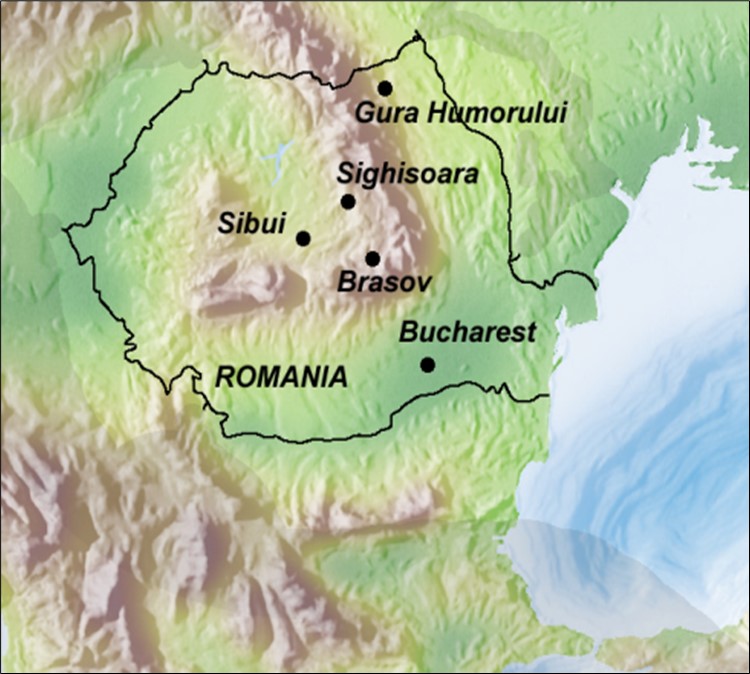
Over the course of its turbulent history, Romania has been subjected to the cultural influences of the ancient Greeks, Romans, Slav, Bulgarian and Hungarian invaders, Byzantium, German settlers, Ottoman Turks and the Habsburg empire. All these have blended with one another and with the ancient indigenous civilization of the Geto-Dacians to give Romania one of the richest and most varied cultures in Europe with wonderful art and architecture.
The journey begins in Bucovina in northern Moldavia where the party will visit some of the most important of the magnificent Moldavian painted churches. These churches, which are generally associated with monastic foundations, are situated in surroundings of outstanding natural beauty and constitute one of Romania's most original contributions to the European artistic heritage. Many were built between the late 15th and early 17th centuries, and while the idea of decorating the outside walls of churches with religious paintings is not peculiar to Moldavia or to that period, what does seem to be unique is that their exterior walls are entirely covered with paintings from foundations to roof. The paintings were executed al fresco, using a palette of glowing colours, including the famous Voronet blue, and they
combine Byzantine formality for the portrayal of exalted themes with a more naturalistic, vernacular style for homelier subjects.
From Bucovina, the party will drive south through the beautiful forest and mountain scenery of Transylvania, staying at Sighisoara, Sibiu and Brasov, which are three of the Siebenbiirgen, the seven fortified cities built in the Middle Ages by German settlers (collectively known as Saxons) and visiting on the way a series of monasteries, churches and Saxon fortified citadels. In Sibiu admire the collection of paintings, sculptures and icons partly made by Samuel Brukenthal, Imperial governor of Transylvania from 1777 to 1787, and housed in his Baroque palace. In the nearby village of Sibiel, there is a splendid collection of icons painted on glass. The magnificent late Gothic Black Church in Brasov contains a notable collection of Oriental carpets and a fine Viennese organ.
Before returning to Bucharest, visit the magnificent Peles Castle, built for King Carol I and Queen Elisabeta, better known as the writer Carmen Sylva, in a bizarre mixture of pseudo- Renaissance, Byzantine and Moorish styles. Nearby is the late 17th century Sinaia Monastery, which houses an important collection of icons and ecclesiastical vestments.
The journey ends with a visit to Bucharest itself where magnificent byzantine churches are juxtaposed next to palatial Beaux-Arts town houses. Time permitting there will be a visit to Casa Poporului, apotheosis of Ceausescu's megalomania and the exquisite Palace of Mogosoaia, built in the first years of the 18th century by Prince Constantin Brancoveanui of Wallachia.
Trip Leader:
![]()
The journey will be accompanied by Alina Cambir who is a very experienced and knowledgeable Romanian guide who has accompanied several very successful trips for Distant Horizons.